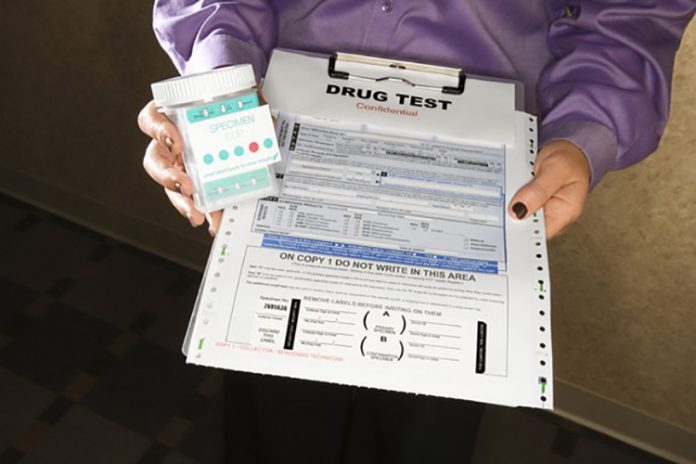The marijuana industry is budding before our eyes, and investors who’ve trusted in pot stocks for a year or longer have likely been handsomely rewarded. Since the beginning of 2016, most marijuana stocks have vaulted higher by triple- or quadruple-digit percentages.
Why such optimism? To begin with, North American legal weed sales are expected to catapult from $9.7 billion in 2017 to more than $47 billion a decade later, according to cannabis research firm ArcView. Investment firm Cowen Group is even more bullish and is expecting the global cannabis market to tip the scales at $75 billion by 2030.
We also are witnessing a distinct shift in the way the public views cannabis, at least in the United States. Back in 1995, national pollster Gallup found that only a quarter of the American public favored legalization. As of October 2017, that figure had risen to an all-time high of 64%. This support has been a key reason why 29 states have legalized marijuana in some capacity since 1996.
Marijuana remains stuck in neutral in the U.S.
Yet despite this steady shift in the public’s opinion, marijuana firmly remains a Schedule I drug at the federal level in the United States. This classification means cannabis is entirely illegal (just like LSD and heroin), is considered to be highly prone to abuse, and doesn’t have any recognized medical benefits.
This classification does more than simply make marijuana illegal at the federal level. It also makes operating a weed-based business in those aforementioned 29 states incredibly difficult. Most pot-based businesses have little or no access to basic banking services since financial institutions in the U.S. fear monetary penalties or criminal charges if they provide these services to the cannabis industry.
Furthermore, profitable businesses that sell a federally illegal substance are hit with Section 280E of the U.S. tax code, which disallows them from taking normal corporate income-tax deductions. This can lead to an effective tax rate of as much as 90%, which constrains reinvestment and hiring.
The ultimate cannabis gray area: How should employers treat marijuana during drug testing?
But there are other behind-the-scene issues brought about from this piecemeal, state-level legalization in the U.S. that you probably aren’t aware of.
For instance, there’s the gray area of how employers should deal with workers who use cannabis in legalized states. Employers are within their right under federal law to drug test their current and prospective employees for tetrahydrocannabinol (THC), the psychoactive component that gets you “high.” If an employee tests positive for THC, he or she could be fired — or not hired in the case of prospective employees — as a result, even if a recreational and/or medicinal marijuana state law is on the books.
Of course, it’s not simply as cut and dried as I made this sound above. Another nuance to the above scenario is that THC can stay in a person’s system for days or weeks after use. This can lead to a positive drug test long after a person has used cannabis.
Another issue is that, unlike alcohol, there are no preset guidelines that define impairment when it comes to marijuana. While some employers have a zero tolerance policy — i.e., if an illegal substance is found in your system, you can be disciplined or terminated — others have guidelines that define what levels of a substance is deemed acceptable or unacceptable (e.g., a blood alcohol content above a certain level).
This gray area can create quite the headache for employers and employees in legalized states.
How Maine is reshaping the employment landscape
However, one state is changing the game, so to speak.
Beginning Feb. 1, 2018, Maine, which voted to legalize recreational marijuana in November 2016, officially began prohibiting employers from refusing to employ people or taking adverse actions against employees for their cannabis use while off-duty and off of their employer’s property. Employers may not test new applicants for marijuana, either. It’s the first state in the country to put a law on its books barring employers from treating cannabis users unfairly.
The passed law also requires Maine employers to have written drug-testing policies that are approved by the Maine Department of Labor, should they choose to drug test. To gain approval, employers have to address specific topics that include what positions will be tested, the substances that’ll be tested, the cutoff level for a “failed” test, and the consequences of a failed test.
It’s worth pointing out that Maine’s marijuana legalization law doesn’t completely remove the ability of employers to police cannabis. For instance, employers are still within their rights to bar cannabis possession in the workplace, as well as discipline employees who are under the influence of cannabis. However, according to the Maine Department of Labor, an employee’s positive drug test alone isn’t enough to definitively prove that an employee is under the influence of cannabis.
Also, employers that are required to comply with federally mandated marijuana testing, such as employees of the U.S. Department of Transportation, aren’t subject to Maine’s marijuana legalization law.
Nonetheless, Maine is setting an example that other legalized states may follow, assuming its employment policies work well.
This will remain a gray area for some time to come
The bigger issue here is that federal policy and state-level cannabis laws are liable to remain in opposition of each other for the foreseeable future. Lawmakers on Capitol Hill have far too much on their plate to squeeze cannabis reform onto the docket. Plus, Republicans currently control the legislative branch of the government, and the GOP has historically had a more negative view on weed when compared to Democrats and Independents.
As long as marijuana remains illegal at the federal level, employers in all states, minus Maine, will likely still have the ability to selectively drug test current and prospective employees. That’s a growth inhibitor for the cannabis industry.














